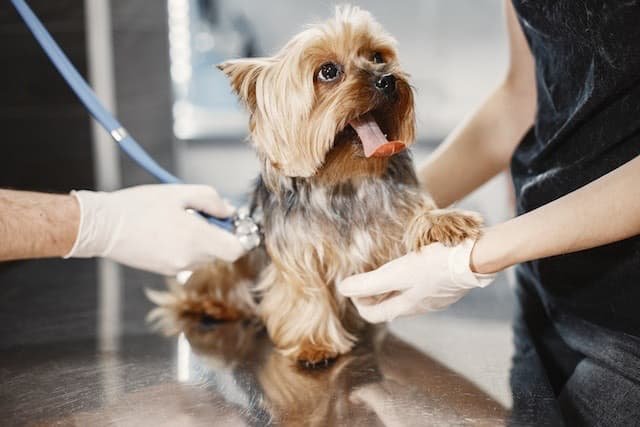Bovine Ketosis
Bovine Ketosis is a multifactorial disorder of energy metabolism. Negative energy balance results in hypoglycemia, ketonemia (the accumulation in blood of acetoacetate, β- hydroxybutyrate (BHB) and their decarboxylation products acetone and isopropanol) and ketonuria. This is because high-yielding cows in early lactation are in negative energy balance and are subclinically ketotic as a result.
Ketosis is also known as Hyperketonemia and Acetonemia.

Glucose Metabolism in Ruminants
Dietary carbohydrates are fermented in the rumen to short chain fatty acids, principally acetate (70%), propionate (20%), and butyrate (10%). Propionate and amino acids are the major precursors for gluconeogenesis, with glycerol and lactate being of lesser importance. Thus, Glucose needs in cattle must largely be met by gluconeogenesis.
Propionate:
Propionate is produced in the rumen from starch, fiber, and proteins. Enters the portal circulation and is efficiently removed by the liver, which is the primary glucose producing organ.
Most important glucose precursor; an increased availability of propionate can spare the hepatic utilisation of other glucose precursors, and production of propionate is favoured by a high grain inclusion in the diet.
Amino Acids:
The majority of amino acids is glucogenic and is also important precursors for gluconeogenesis. Dietary protein is the most important quantitative source, but the labile pool of body protein (particularly skeletal muscle) is also an important source; together they contribute to energy synthesis , milk lactose synthesis, and milk protein synthesis.
Types of Bovine Ketosis
1. Primary ketosis (production ketosis) – Estate acetonemia:
- Primary ketosis occurs in cows in good to excessive body condition that have high lactation potential and are being fed good-quality rations but that are in a negative energy balance.
- Most the cows had subclinical ketosis in which there are increased concentrations of circulating ketone bodies but no overt clinical signs.
- Affected cattle recover with correct feeding and ancillary treatment.
2. Secondary ketosis:
- Secondary ketosis occurs where the presence of other disease results in a decreased food intake.
- The cause of the reduction in food intake is commonly the result of abomasal displacement, traumatic reticulitis, metritis, mastitis, or other diseases common to the post parturient period.
- Significant proportion of all cases of ketosis in lactating dairy cattle are secondary to other disease.
3. Alimentary Ketosis:
- Excessive amounts of butyrate in silage and possibly also a result of decreased food intake resulting from the poor palatability of high-butyrate silage.
- This type of ketosis is commonly subclinical, but it may predispose to the development of production or primary ketosis.
4. Starvation Ketosis:
- Starvation Ketosis occurs in cattle that are in poor body condition and that are fed poor quality feedstuff. There is a deficiency of propionate and protein from the diet and a limited capacity of gluconeogenesis from body reserves.
5. Ketosis resulting from a specific nutritional deficiency:
- Deficiencies of cobalt and possibly phosphorus may also lead to a high incidence of ketosis.
Epidemiology
- Feeding systems: Ketosis is more common in housed or stallfed animals
- Morbidity: variable
- Mortality: very low
- Species: bovines, ovines and caprines are affected
- Breeds: buffaloes and crossbreds are more susceptible than indigenous cattle
- Sex: disease of female
- Stage of production: it is more common in lactating than pregnant animals in bovines. In sheep disease occurs during advance pregnancy
- Stage of lactation: it mostly occurs between 10 days to 2 months after calving
- Number of lactation: Disease incidence is higher during 3rd to 5th lactation
- Season: higher incidence during calving season
- Milk yield: more in high yielding animals
- Predisposing factors: genetic susceptibility, over fat or thin at calving and cold
Pathogenesis
In high-producing dairy cows there is always a negative energy balance in the first few weeks of lactation. The highest dry matter intake does not occur until 8 to 10 weeks after calving, but peak milk production is at 4 to 6 weeks, and energy intake may not keep up with demand.
In response to a negative energy balance and low serum concentrations of glucose (and consequently low serum concentrations of insulin), cows will mobilize adipose tissue, with consequent increases in serum concentrations of nonesterifid fatty acids (NEFA) and subsequent increases in serum concentrations of β-hydroxybutyrate (BHB), acetoacetate, and acetone.
The hepatic mitochondrial metabolism of fatty acids promotes both gluconeogenesis and ketogenesis.
Due to the production of isopropanol, a breakdown product of acetone in the rumen, which is then absorbed into the bloodstream, potentially leading to neurologic abnormalities.
Fatty degeneration of the liver may prolong the recovery period.
Changes in ruminal flora after a long period of anorexia may also cause continued impairment of digestion. May also causes immunosuppression in ketotic animals.
Clinical Findings
1. Clinical ketosis
Clinical ketosis is having two major clinical forms of bovine ketosis— wasting form and nervous form.
Wasting form:
- Wasting form of ketosis is the most common form
- Selective appetite: Animal refuses to eat concentrate feed however takes roughages
- Marked drop in milk production
- Rapid loss of body weight i.e. emaciation
- Moderate depression and disinclination to move
- Sweetish smell in breath, milk and urine
- Faeces are firm dry and covered with mucus
- Ruminal movements may be decreased in amplitude and rate
- Temperature, respiration and pulse rates are usually normal
Nervous form:
- Nervous form of ketosis is the less common form
- Circling movements
- Staggering gait, crossing of legs
- Head pressing
- Apparent blindness
- Aimless wandering
- Nervous signs like hyperaethesia, tremor, convulsions may occur in short episodes which last for 1-2 hours and may recur at an interval of about 8-12 hours
- Vigorous licking of skin and inanimate objects
- Chewing movements with profuse salivation
2. Subclinical ketosis
Subclinical ketosis is also called as spontaneous ketosis. It may regress or remain as such or turn into clinical form. This characterized by mild drop in milk yield.
Diagnosis
- History : Recent calving, underfeeding and high milk yield.
- Symptoms: Refusal of concentrates, marked drop in milk yield and rapid emaciation.
Following clinical pathology used for bovine ketosis diagnosis:
1. Glucose:
Plasma glucose concentrations are reduced from the normal of approximately 50 to 65 mg/dL to 20 to 40 mg/dL.
2. Ketones:
Most commonly, plasma or serum beta hydroxybutyrate (BHB) is used for analysis of ketonemia.
| Parameters | Normal | Subclinical Ketosis | Clinical Ketosis |
|---|---|---|---|
| Plasma BHB | <1.0 mmol/L | >1.0 mmol/L | >2.5mmol/L |
Milk and Urine Cow-Side Tests: Milk and urine ketone concentrations have been traditionally detected by the reaction of acetoacetate with sodium nitroprusside and can be interpreted based on the intensity of the reaction.
| Intensity of color | Concentration |
|---|---|
| Nil | Negative |
| Trace | 5 mg/dL |
| Small | 15 mg/dL |
| Moderate | 40 mg/dL |
| Large | >80 mg/dL |
Milk strip test detecting the concentration of BHB in milk is available and is graded on the concentration of BHB.
Milk-Fat-to-Protein Ratio: A fat to-protein ratio greater than 1.5 in first-day test milk is indicative of a lack of energy supply in the feed and of risk for ketosis.
Milk production in multiparous animals is also separately associated with postpartum negative energy balance.
3. Hematology and Serum analysis:
Hemotology sample can show Neutropenia (10%), Lymphocytosis (60-80%) and Esinophilia (15-40%). Plasma concentrations of NEFAs and total bilirubin are elevated in ketosis, with mean NEFA concentrations increasing above 0.3 mmol/L.
4. Test for ketone body detection in field:
Reagent:
- Ammonium sulphate- 100g
- Sodium carbonate anhydrous- 50g
- Sodium nitroprusside- 3 g
- Mix it and preserve in brown coloured wide mouth bottles
Test for Urine:
- Take a pinch of reagent powder and place it in a slide
- Add 2 or 3 drops of urine over it
- Wait for one minute
- If it changes into permanganate colour, it is positive for ketone.
Test for Milk:
- Place 2 or 3 pinch of reagent powder in a test tube
- Add 2 to 3 ml of milk carefully
- Milk must run on the side of the test tube
- Do not shake the tube
- Keep it for few minute
- If the milk is changed in to permanganate colour, the animal is positive for ketosis.
Differential Diagnosis
General consideration of the history, with particular reference to the time of calving, and the feeding program, and biochemical examination to detect the presence of hypoglycemia, ketonemia, and ketonuria are necessary to establish a diagnosis.
- Wasting form: Abomasal displacement, Traumatic reticulitis, Primary indigestion, Cystitis and pyelonephritis.
- Nervous form: Rabies, Hypomagnesemia and Bovine spongiform encephalopathy.
Treatment
- Glucose therapy alone: 20% glucose @0.5 g/kg daily for 2-3 days or 50% glucose 500 ml IV
- Glucose + Insulin therapy: glucose 20% @0.5g/ kg IV plus protamine zinc insulin is 200 to 300 IU per animal Insulin is highly effective
- Corticosteroids alone: They increase blood glucose by decreasing tissue uptake of glucose and reducing milk production for upto 3 days
- Triamcinolone acetonide @ 0.05 mg/kg IM or
- Dexamethasone @ 0.04 mg/kg IM daily for 2-3 days
- Corticosteroids + insulin therapy
- Anabolic steroids: 60 mg and 120 mg of trenbolone acetate are effective as single injections
- Glucose precursors:
- Sodium propionate @80 gm orally daily for 5-6 days
- Glycerol or glycerine @110-220 g daily for 4 days
- Propylene glycol @225 ml twice daily for 2 days and followed by 110 ml twice daily for 2 days
- Nicotinic acid: @8 gm orally daily for 5-6 days
- Supportive treatments:
- Inj. Liver extract with B complex @ 5-10 ml IM on alternative days
- Provision of mineral mixture comprising phosphorous and cobalt
Control
- Cattle should neither be starved nor overfed at calving
- Give extra allowance of concentrate ration during advance pregnancy
- After calving, the concentrate ration should be fed depending upon the level of milk production i.e. 1 kg concentrate for every 2-3 kgs of milk
- Feeding of ground maize : it contains polymerised glucose which is not fermented in the rumen but is passed to the intestine and absorbed from there
- Feeding of ration which increases propionate production and decreases acetate production. E.g: Finely ground roughage, cooked grains
- Feeding of whole cotton seed or soybean as a concentrated source of energy and gluconeogenic material
- Encourage maximum feed intake by providing palatable feed at frequent intervals Provide ample good quality hay and limited silage
- Ration should contain adequate amount of phosphorus, cobalt and iodine.
- Give glucose precursors in problematic herds such as sodium propionate @110g daily orally for 6 weeks commencing at calving
- Monensin (11 to 22 g/ton of total mixed ration on a 100% dry matter basis; oral administration of a controlled-release capsule delivers 335 mg/day for 95 days)
- Propylene glycol (300 to 500 mL daily, PO)
- 13. Rumen-protected choline (15g daily, PO, from 25 days precalving to 80 days postcalving)
- Cyanocobalamin (vit. B12, 1 to 4 mg IV, daily for 2 to 6 treatments before or at calving)
- Isoflupredone (20 mg, IM, once), with or without insulin (100 U, SC)
- Carry out blood glucose estimations twice during 2-6th week of lactation to know the subclinical form of the disease
- Perform Rothera’s test on urine/milk sample at weekly interval till 6-8 wks after calving
- Give adequate exercise to lactating animals

